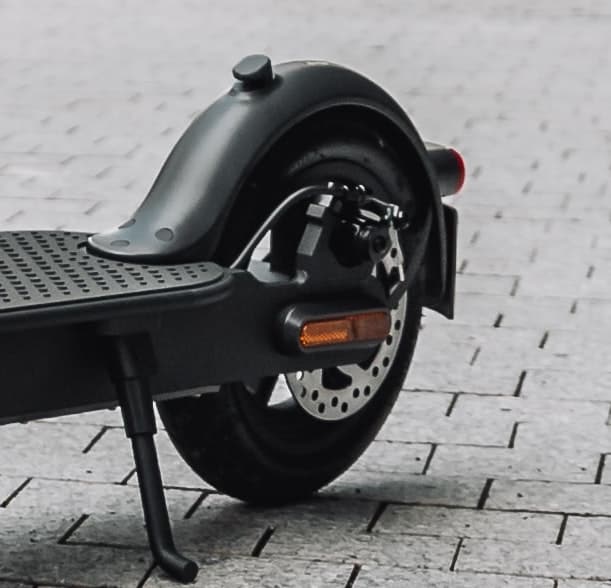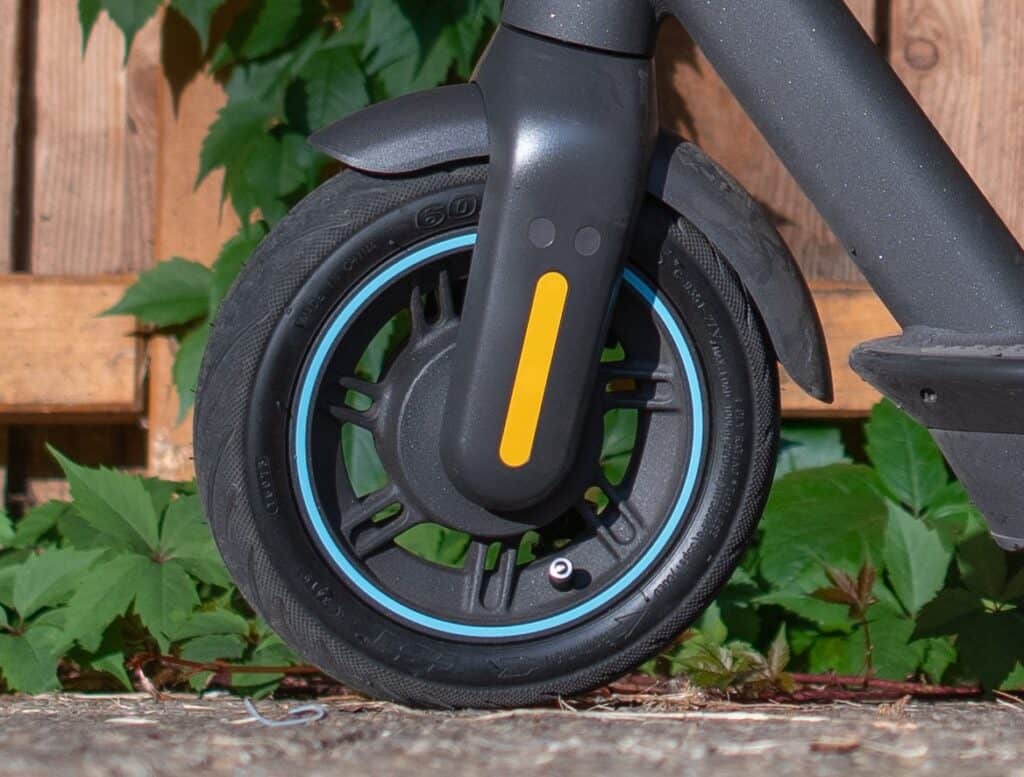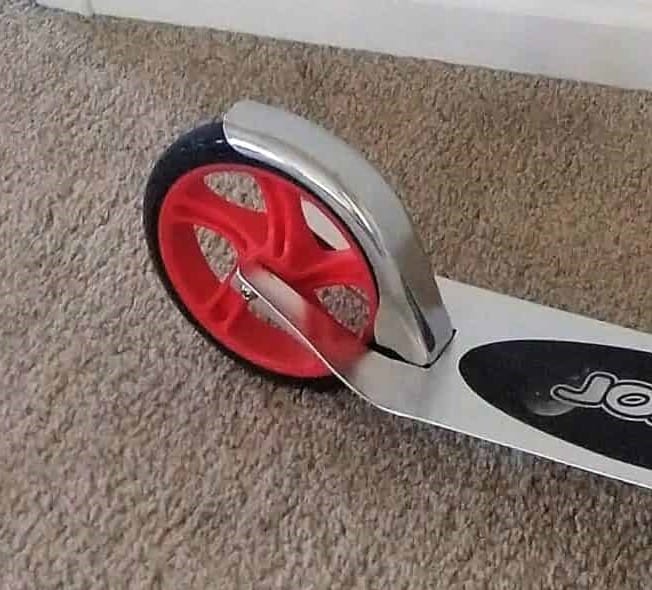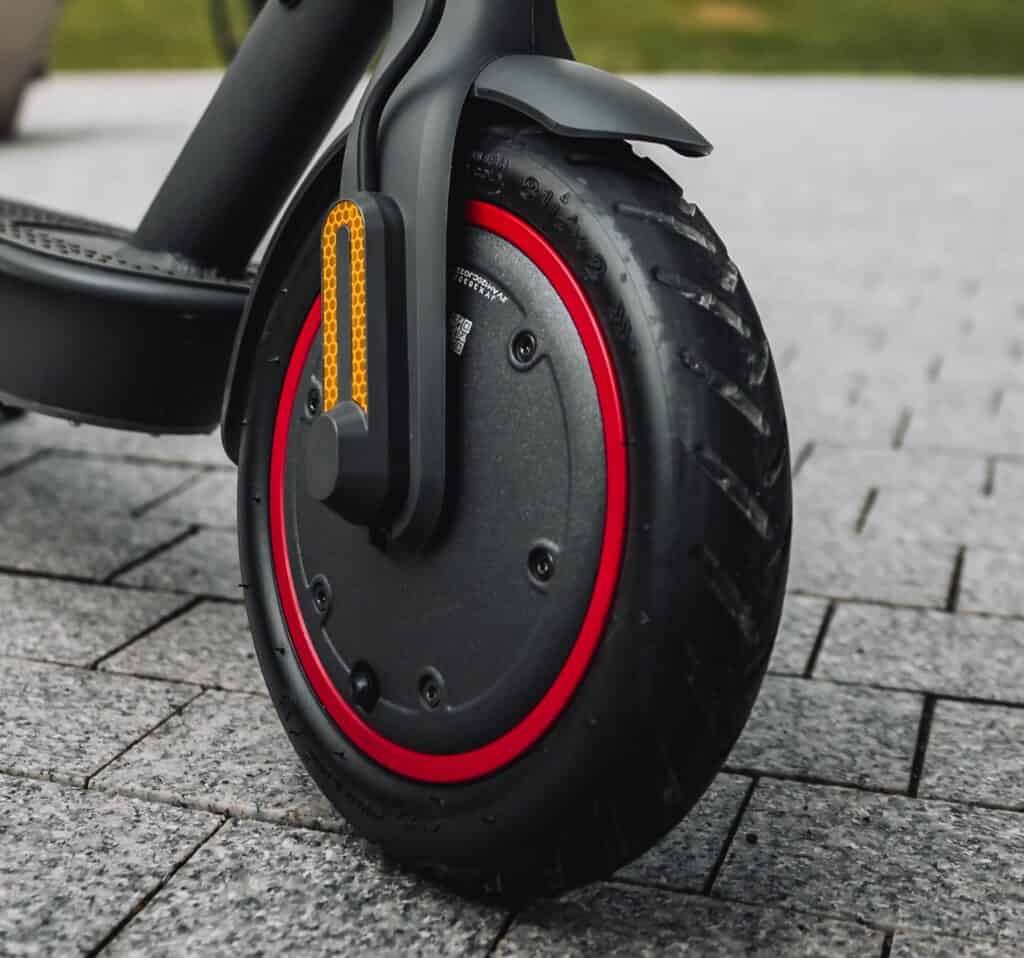Last updated: July 17th, 2023
With all the fancy tech tucked inside electric scooters, it’s easy to overlook some basics.
For instance, brakes make a massive difference in your safety and enjoyment. But do they all even have brakes? If so, what kind? And are all brakes equally effective?
This article might contain affiliate links. As a member of programs including Amazon Associates, I earn from qualifying purchases.
Here’s whether electric scooters have brakes
Virtually all electric scooters have a rear brake. Most also have a front brake, which makes the scooter far safer. Electric brakes are prevalent, but there should be at least one mechanical brake (disc or drum) for power and control.
Understand these types of brakes is crucial if you want a safe, dependable ride. Electric and mechanical (friction) brakes are both viable, but they have major pros and cons than prospective buyers needs to weigh.
Mechanical (friction) brakes on scooters
A mechanical brake applies friction to resist the wheel’s rotation. On electric scooters, this usually happens in two ways.
One is with a disc brake, which you’re probably familiar with from bicycles.
They comprise a rotor (metal disc) mounted to the hub, and a caliper (a sort of retractable clamp) that pinches the brake pads against the rotor. The brake lever attached to the caliper such that pulling the lever tightens the brake.

Another common type is called a drum brake. You might have noticed these on cars, and you might’ve ridden one in the form of a bicycle coaster brake.
They involve a drum (outer body) either inside or attached to the hub, and a pair of shoes (metal half-circles) that sit inside the drum. When you pull the lever—or back-pedal, with a coaster brake—it pushes the shoes outward to create friction against the drum.

Are disc brakes better on electric scooters? Disc brakes are the best choice because they’re extremely powerful but also have good modulation. They’re exposed to the weather, but it’s not a problem thanks to strong clamping forces and water-shedding rotors. They’re easy to adjust or upgrade, and bicycle shops can help if need be.
Uncommon variations: fender and rim brakes
One mechanical brake design that you’ll seldom see is a fender brake.
That’s when the rear fender attaches with a hinge and spring, so the rider steps on it to create friction against the rear wheel. When the rider eases up, it springs back away from the wheel.

Do electric scooters ever use fender brakes? Fender brakes are very rare on electric scooters, since they’re too weak to use above a few miles per hour. They also make the rear tire wear out unnecessarily quickly, since the fender brake rubs directly against the tread.
They’re common on kick scooters, though, due to lower speeds and mass.
Bicycle-style rim brakes are also mechanical brakes, but they’re extremely rare on electric scooters. In fact, you’ll almost never see them besides kick-bike style scooters like the Swifty Electric, since it actually uses bicycle wheels.
Electric brakes on scooters
How do electric brakes work on a scooter?
Electric brakes reverse a circuit, which creates resistance in the motor. The motor is right inside the wheel, so that resistance translates into braking power. And since the motor is the brake, dual-motor scooters can have two electric brakes whereas single-motor scooters can have only one.
They’re good for reducing speed and avoiding wear on mechanical brakes, but they’re not very powerful.
Avoid scooters with only an electric brake!

One uncommon issue I’ve personally encountered is that electric brakes don’t always engage as smoothly and predictably as you’d expect. Once in a while, they get significantly stronger and more abrupt when you’re traveling faster.
That’s not a huge problem with the rear wheel. But it is indeed a huge problem with the front, where unexpectedly abrupt braking can cause a crash.
To be clear, that’s not common. But it does happen, which underscores the importance of having mechanical brakes as well.
Do electric scooters have regenerative braking?
Many electric scooters have regenerative brakes, but not all of them. Some use non-regenerative electric braking, and many others use mechanical brakes for better performance and control.
Electric motors and generators are effectively the same thing in reverse. As mentioned above, electric braking is basically reversing a circuit inside the motor built into the wheel. And if the reversed circuit is wired in a certain way, then it channels that kinetic energy back into the battery in the form of electricity.
Some automatically apply a tiny bit of regenerative braking the second you release the throttle. The level of resistance (and therefore recharging) is usually adjustable. Higher resistance can help in hilly areas, since you’ll generally need to brake anyway after releasing the throttle. Lower resistance is nice in flatter areas, where you may want to continue coasting without slowing down.
Regenerative braking is somewhat effective in general. It usually doesn’t extend your range by more than a few miles, but it varies tremendously by model, terrain, rider weight, and battery health.
For example, my Ninebot Max sometimes recovered a full bar on the battery meter after braking for an extended descent. But on flatter routes—without all that downhill kinetic energy to capture—it didn’t recover anything noticeable.
Which brake is safest to use on an electric scooter?
The front and rear brake behave quite differently, so the safer choice depends on your riding situation.
The rear is safer for gradual stops. It’s behind your center of mass, so there’s no risk of getting thrown over the handlebars or creating a front-wheel skid.
The front is safer for emergency stops. It has the vast majority of braking power because it’s in front of your center of mass. Granted, braking hard in the front could throw you over the bars or cause a skid. But if the alternative is a collision, then those risks are the lesser of two evils.
To stay safe when squeezing the front brake hard:
- Crouch down and push your hips back, to keep your center of mass closer to the rear wheel. This improves rear-wheel traction and braking power, while making it harder to flip over the bars.
- Avoiding turning if at all possible. Turning makes it harder to recover from a skid and makes a skid likelier in the first place.
